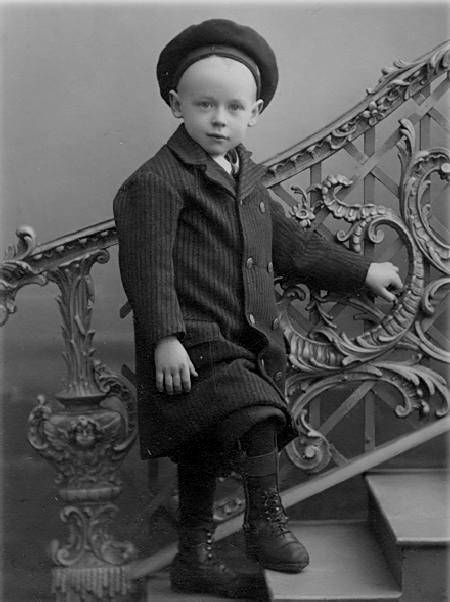
Figure 1.--This CDV portrait shows a little Norwegian boy wearing a striped winter coat and sailor cap. The photographer was K. Nyblin in Bergen. It looks to have been made in the 1900s. |

|
Norway as a country disappeared in the middle ages and became part of Denmark and than Sweden. Thus fashions were influenced by these associations, as well as the country's climate northern lattitude. ermany because of its size and economic importance wa an important influence on Scandinavian fashions. Germany bordered on Denmark and shred a Baltic coast with Sweden. We do not have much information on the19th century, but believe Norwegian fashions generally followed Europen trends, especially Scndinavian trends. Norway seceeded from Sweden and began an independent kingdom. The Norwegian queen was a British princess. This perhaps introduced a British touch to the basically Scandinavian-German styles. The short pants that became widely worn in Europe during the
1920s were never as common in Norway as in other European
counrties, in part because of the climate. Some little boys wore shorts and over-the-knee stockings. Young boys by the late 1940s,used long stockings, if they were 10 or younger, and only in winter. Norwegian children by the 1970s were wearing the generalized European fashions, albeit with styles especially suited for cold weather.
Norwegian boys clothing generally followed general European patterns. Norway during this century was a part of both Sweeden. As far as we know, Norwegin and Swedish boysc dressed similsrly. there was some British infuence, but this may have been more of a 20th century devlelopment. We have a very limited Norwegian archive. Thus we can say very little about 19th century fashion.
The three Scasndanab=vian countries (Denmark, Norway and SwedenO) have close associations. Norway and Denmark were conncted for centuries. The Treaty of Kiel stipulated among other marters that Norway was to be ceded by the king of Denmark–Norway to the king of Sweden (1814). There as some opposition i Norway but the transfer was consumated. Clohing styles throughout Scndanavis were simlar. There was a strong German influence, especially in Denmark. The new king chosen for Norway (1905) was married gti a British princess--one of Queen Victoria's many children. This introduced a British influence. The primsry influence beyond fashion influences was the climate and the need for warm winter clothing. We notice that sailor suits were popular in the early-20th century, but this was bih a Briish and German influence. After World War II, Norwegin children gradually adopted the pan-European styles now worn throughout Europe. You can no longer easily identify where people are from, especially children, based on how they are dressed.
Navigate the Boys' Historical Clothing Web Site:
[Introduction]
[Activities]
[Biographies]
[Chronology]
[Clothing styles]
[Countries]
[Bibliographies]
[Contributions]
[FAQs]
[Glossary]
[Images]
[Links]
[Registration]
[Tools]
[Boys' Clothing Home]
Navigate the Boys' Historical Clothing national pages:
[Return to the Main Norwegian page]
[Return to the Main countries page]
[Australia]
[Belgium]
[England]
[France]
[Germany]
[Ireland]
[Italy]
[Japan]
[Korea]
[Mexico]
[New Zealand]
[Scotland]
[United States]
